|
|
18 January 2016, at 2:18 pm
 Leonard Turner’s wife Lorrie Esther Baker, my maternal great-grandmother, was born in North Marston, Bucks, on 27 January 1887, but by the time she was ten her family had moved to the tiny, neighboring village of Hoggeston, which is where she lived until the age of twenty-two when she married Leonard and settled in Winslow.[1] You can read more about Lorrie and Leonard here and here.
Lorrie was the second of nine children born to Henry Thomas Baker, a butcher from North Marston, and his wife Annie Imogen Emily Meadows, who were married in Winslow on 10 September 1883.[2] Of their nine children, the first eight were daughters.[3] I received this in a letter from Aunty Jean dated 28 October 1990 [4]:
‘…because there were eight Baker girls, I understand the Bells were rung at Hoggeston on the birth of their only (…more)
21 July 2015, at 10:56 pm
 I’m at day two of the Advanced Research Methodology course, led by Thomas W. Jones, in Pittsburgh!! So happy to be here! I’m blogging abou the week at A Well Lit Path. You can follow that blog here :-) Share:
You might also like:GRIP 2013 Day TwoAmerican State Papers GRIPLearning DeedMapper at GRIP 2013
2 January 2015, at 3:32 pm
 I’m off and running with my Genealogy Do-Over, but I’ve decided to post updates on Lantern Genealogy’s blog which you can get to here. Share:
You might also like:The Thing About Family Lore……The Internet is a Wonderful Thing…
31 December 2014, at 2:28 pm
 The biggest problem I’ve found in running a professional genealogy business from home, is the guilt I feel when NOT working. If I sit down to read, watch t.v., or (and this hardly happens anymore, sadly) knit, my closed laptop beckons me from across the room with its mantra of “there’s one more site which might solve your client’s problem, why aren’t you checking it NOW?”
The second (although closely vying for top billing) biggest problem is that my personal research is perpetual on the back burner. The third, of course, being the nagging awareness that the research I did waayyyyyyy back in the start of my genealogy addiction, falls embarrassingly short of The Genealogy Proof Standard I live by today.
So, imagine my delight when I stumbled over Thomas MacEntee’s wonderful project for the New Year! Genealogy Do-Over, which you can read all about here. (…more)
2 April 2014, at 12:10 pm
 I wish I knew.
For some time, I’ve been attempting to sort out the kinships and identities of the various Hugh Filbees of Lewknor, Oxfordshire. If you were a Hugh Filbee living at the foot of the Chiltern Hills in the 1600s and 1700s, you most likely had a son, perhaps a brother or, even more likely, a cousin, named Hugh, and there’s a good chance you married a woman named Alice or Ann.
Crikey.
If you examine the parish registers of St Margaret’s at Lewknor, and St Mary’s at Adwell, you’ll find mention of myriad men named Hugh Filbee dating back to the earliest entries. I wrote about the Lewknor register in this post. In 1585, Hugh Filbee and his wife Alice (of course) baptized son William at Adwell. Jump ahead in that register a hundred or so years to March, 1708/9, and you’ll discover the baptism, and (…more)
3 February 2014, at 9:53 am
 I’m taking a Journaling Your Life e-course, which has been all kinds of wonderful even though it only started a week ago. In preparation, I spent a few days digging through boxes, dusty bookshelves, and dark closets, on a quest to find every begun-then-abandoned journal I own, and there are a LOT….. but, back to the point,
tucked inside an old, cast-off (about 75% abandoned ) journal, was a folded bit of teal paper covered in my handwriting. It was dated June 22, 1996 and began with:
“stories from Aunty Helen and Aunty Jeannette…”
I have to say, I have absolutely no memory of this particular conversation with two of my Great Aunts (siblings in my Grandfather’s family of 14 children), and no recollection of having ever heard these stories. And for that, I’m grateful beyond belief that June 1996 was among the few, brief periods when I was (…more)
7 January 2014, at 8:44 pm
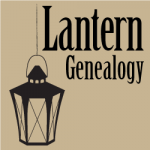 No, I have NOT abandoned my beloved blog…
And, no, I haven’t stopped doing genealogy…..
I’ve just been so busy helping others with their projects I’ve been neglecting mine. :-(
A couple of years ago, a professional genealogist I greatly admire told me to be careful, because it could happen to me….no time for MY personal research. I scoffed at the idea, but… here it is January 2014 and I haven’t thought about my own work since I can’t remember when (apparently not since August, the date of my last blog post – sigh).
Don’t get me wrong…… I LOVE what I’m doing! People have such interesting ancestors! And provocative brick walls which are the stuff of a genealogist’s dreams Lately, I’ve been particularly engrossed in helping a client with his Mayflower Society membership application. We’ve been at it for a while and are one female ancestor’s parentage away (…more)
11 August 2013, at 3:33 pm
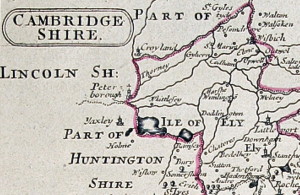 WILLIAM OKEY was my 4x Great Grandfather, in my Grandmother’s MOYSES branch of the family. I’ve always had something of a soft spot for William. He didn’t live a long life, and I think what life he did live was difficult. He was born at the hamlet of March, Cambridgeshire, on 31 May 1819, and was the son of CLEMENT OKEY and ELIZABETH RUST. [1]
March is part of the Isle of Ely, which was once an island set amid marshy fens. Before the draining of the Fens, March was essentially an island in its own right, and, thanks to its proximity to the River Nene, operated as a successful 16th century port and market town. It’s known around the world as the home of St Wendreda, a gothic style church with a hammer beam roof carved with 120 wooden angels. It’s the only church in the world dedicated (…more)
27 July 2013, at 10:15 am
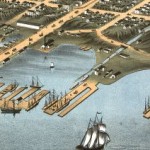 Bird’s eye view of the city of Erie, Erie County, Pennsylvania 1870. Chicago Lithographing Co.(Library of Congress online map collection)
The Advanced Land Class at GRIP spent yesterday afternoon in the computer lab, and it was probably my favorite part of the week. Pam Sayre led 35 of us through the process of platting property on a historical map using the windows based DeedMapper software, by Direct Line. We practised on both the rectangular grids of Public Domain Land, and the more complicated metes and bounds of the 13 colonies. You can learn more about the software here.
The computer lab at La Roche is set up for 30, so some of us had to double up on computers. The room was also FREEZING so, for future reference, if you’re taking a course that will spend any time at all in the lab….bring a heavy sweater! Walking a (…more)
25 July 2013, at 9:27 pm
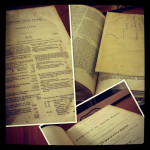 This morning in Advanced Land Records, we’re learning about the papers of the U.S. Government; a source which is under-utilized and yet rich with genealogical information. Much of the land records referenced in the published record of the U.S. Congress exist nowhere else.
Continental Congress & Constitutional Convention Journals & Papers 1774–1789
American State Papers 1789–1838
U.S. Serial Set 15th Congress 1817–present
To be honest, I knew about these government papers before this morning’s lecture, but had never thought to seek them out. I misunderstood their purpose and content and certainly underestimated their value to my research. Now, thanks to Rick Sayre, I know better!
Rick made the interesting point this morning that, before we had the U.S. government structure we have today, a citizen’s only recourse for complaints and other issues with Congress was to go to congress and tell them. It was a more personal approach; and the journals and (…more)
|
|


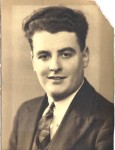


















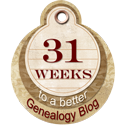



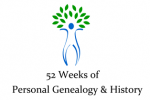


Featured Posts